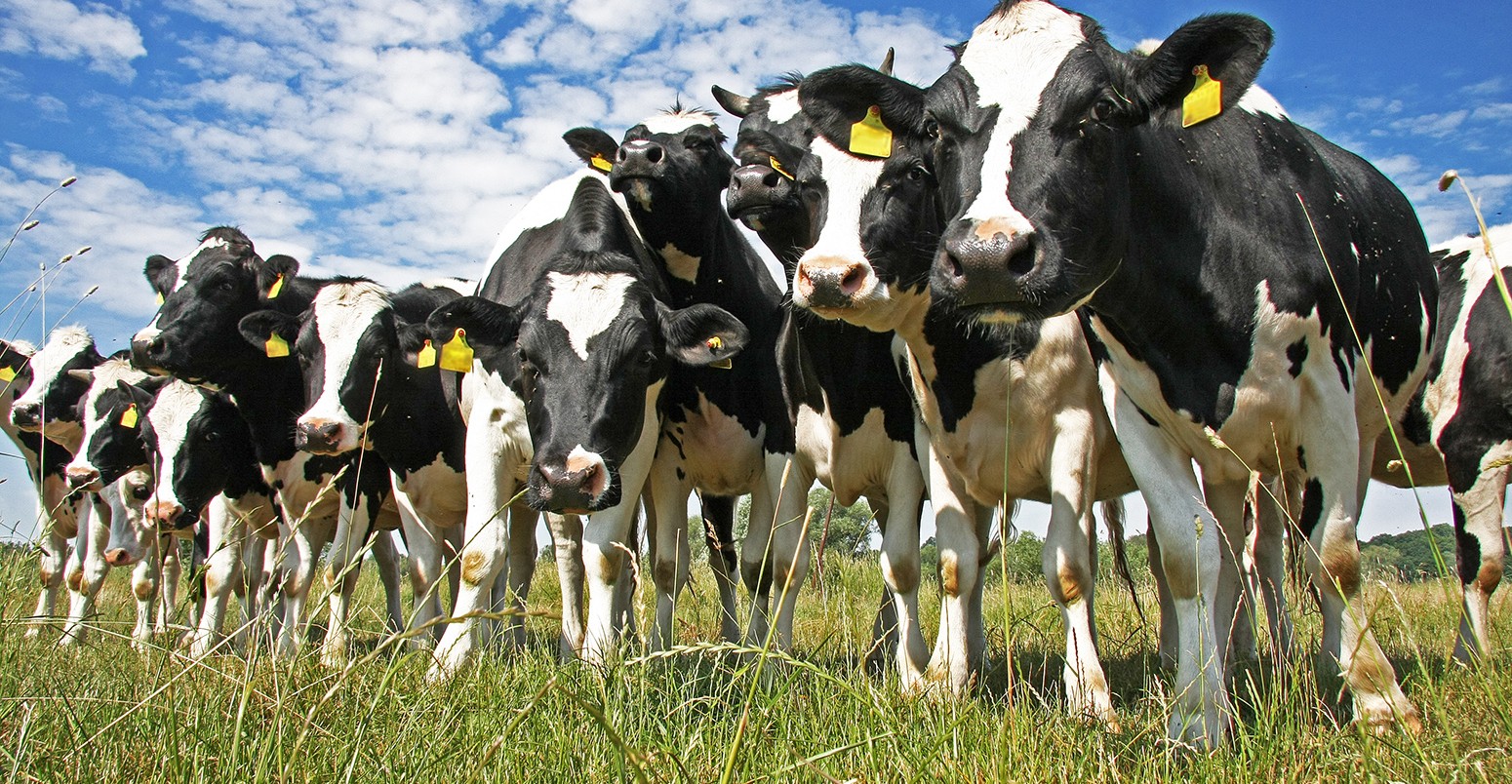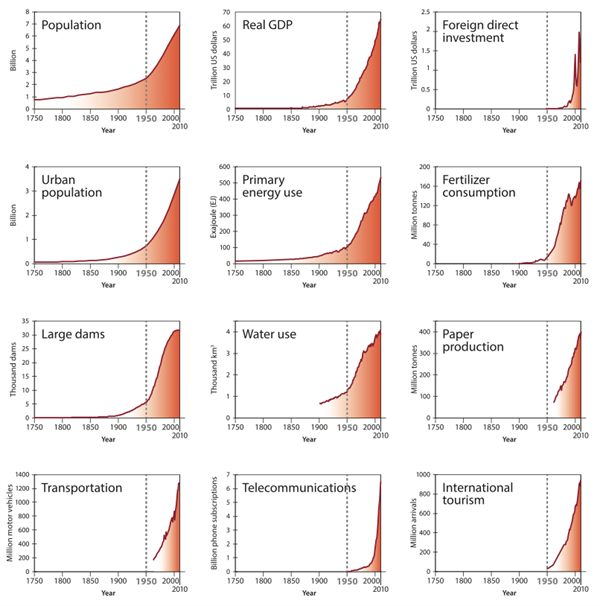
Scientists issue stark warning as Earth passes into danger zone
Carbon Brief Staff
01.15.15Carbon Brief Staff
15.01.2015 | 7:00pmHuman activity over the past century and a half has pushed the Earth into critical mode, say scientists. New research published today finds four out of nine ‘planetary boundaries’ have now been crossed. Biodiversity loss, fertiliser use, climate change and land use have all exceeded the point at which the risk of sliding into a “much less hospitable” world becomes high.
Passing any one of the nine critical boundaries risks disrupting the complex and delicate interactions that exist on Earth between the land, ocean, atmosphere, ice sheets and people, says the team of 18 researchers.
An early warning
The concept of planetary boundaries is to identify how much humans can develop and use the Earth’s resources while staying safely within limits of what the planet can take.
In 2009, a collaboration of several top research institutions identified a set of nine processes that regulate the land, ocean and atmosphere systems on Earth. For each process they identified a boundary beyond which humans would cause “unacceptable environmental change”.
You can see the boundaries in the figure below, which also shows the current status of each one.
Infographic: Rosamund Pearce, using a figure modified from Stefan et al. ( 2015)
Each boundary isn’t a threshold or tipping point for irreversible damage, but an early warning that a threshold is approaching, or that the Earth system is struggling to cope with the stress humans are putting on it. They act as a buffer, giving time for society to react and also allowing for uncertainty in knowing exactly where each threshold lies.
Since the boundaries were set, scientists have been working on ways to monitor how close we are getting to them. In the new study, published in Science, researchers update the boundaries on the basis of the the latest science and provide an assessment of how close we are crossing them.
‘A much less hospitable place’
Of the nine boundaries, we had crossed three of them at the point of the 2009 study: climate change, biosphere integrity, and altered biogeochemical cycles, but now we’ve crossed a fourth – land-use change. This places humanity in a ‘danger zone’, the researchers say.
The boundary for land-use change is the global area of forested land as a percentage of original natural forest cover. It is set at 75 per cent, yet as only 62 per cent of original forest cover now remains, we’ve crossed the boundary.
So why does this matter? Lead author Prof Will Steffen explains in the study’s press release:
“Transgressing a boundary increases the risk that human activities could inadvertently drive the Earth System into a much less hospitable state, damaging efforts to reduce poverty and leading to a deterioration of human wellbeing in many parts of the world, including wealthy countries.”
Core climate change boundary
Of the nine boundaries, the researchers identify climate change and biosphere integrity as ‘core’ boundaries that all the others are dependent on.
Climate change is actually measured against two boundaries: the concentration of carbon dioxide in the atmosphere and amount of heat the Earth is accumulating. We have now passed both.
The carbon dioxide boundary was set at 350 parts per million (ppm), a target consistent with keeping global average temperature rise to within 1.5 degrees Celsius. Yet in 2013, carbon dioxide concentrations hit 396 ppm, and analysis by Carbon Brief suggests that just six years of emissions at current rates will exhaust the carbon budget for a 1.5 degree temperature rise target.
Through many years of international negotiations, two degrees has become the agreed target for climate change, but in the press release the researchers say two degrees is a “risky target for humanity” and an absolute minimum target for climate negotiations.
Human footprint
The Science paper coincides with another paper, also led by Steffen. The study, published in The Anthropocene Review, provides a visualisation of the “Great Acceleration” of human activity since 1950 in a set of 24 environmental and socioeconomic indicators.
The indicators were originally published in a set of graphs in 2004, showing how they changed since the Industrial Revolution in the 18th century. The new paper updates these graphs up to 2010, which are shown below.
Trends from 1750 to 2010 of the 12 indicators of the Earth system, part of what has been dubbed the “Great Acceleration graphs”. Source: Steffen et al. ( 2015)
Trends from 1750 to 2010 of the 12 indicators of the socioeconomic system, part of what has been dubbed the “Great Acceleration graphs”. Source: Steffen et al. ( 2015)
The biggest changes across almost all the indicators are since 1950, Steffen says:
“After 1950 you can see that major Earth System changes became directly linked to changes largely related to the global economic system. This is a new phenomenon and indicates that humanity has a new responsibility at a global level for the planet.”
The scale of the changes supports proposals from other scientists that the Earth has moved beyond the natural variability seen in the recent geological age known as the ‘Holocene’, says Steffen, and into a new era called the ‘Anthropocene’. Steffen adds:
“In a single lifetime humanity has become a planetary-scale geological force.”
A window for change
Despite the bad news, there is still time to bring ourselves back to a “safe operating space”. Co-author of the Science study Prof Johan Rockström says:
“It is obvious that different societies over time have contributed very differently to the current state of the Earth. The world has a tremendous opportunity this year to address global risks, and do it more equitably.”
But opportunity has a lifespan. Beyond a certain point, coming back is all but impossible. As Steffen concludes:
“Past a certain threshold, curbing greenhouse gas emissions, biodiversity loss, or land-use change, for example, may not reverse or even slow the trends of Earth System degradation, with potentially catastrophic consequences”.
Main image: Cows on farmland.
Steffen, W. et al. ( 2015) Planetary boundaries: Guiding human development on a changing planet, Science, doi:10.1126/science.1259855 Steffen, W. et al. ( 2015) The trajectory of the Anthropocene: The Great Acceleration, The Anthropocene review, doi:10.1177/2053019614564785




